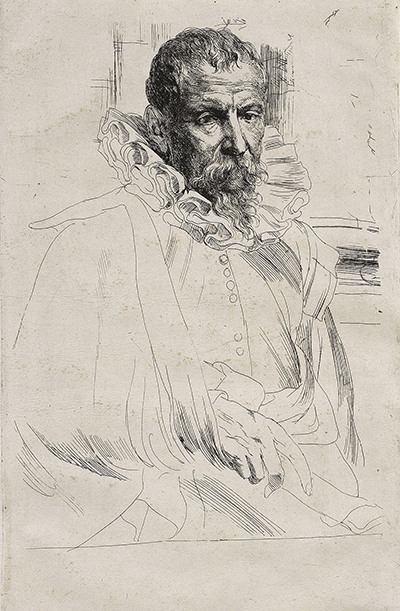Pieter Brueghel the Younger was a highly skilled painter who followed in the footsteps of his father, Pieter the Elder. He would never truly leave the shadow of his parent, partly because of his insistence on producing copies of his father's work.
Brueghel the Younger was highly successful in a commercial sense, and what he lacked in his father's creativity, he more than made up for in how he directed a profitable enterprise. The family put together a large studio which enabled them to spread their work far and wide, both locally and abroad. This in turn helped to spread The Elder's reputation further. The Younger did also produce original artworks of his own, and whilst these should not be dismissed out of hands, they rarely met quite the same level of charm or sophistication of the Elder's best work. The impact of this family within the art world would also go much further than just these two individuals, with several other members also contributing notable items of their own (see also Jan Brueghel the Elder). This led to the term of Bruegel Dynasty coming into use.
The way in which the family worked closely together within their studio, often alongside their own assistants would ensure that for some years there would be issues in attributing some of the work which derived from this artistic collective. Thankfully, most of these question marks have since been solved, and now we are more able to summarise the artistic characteristics of each family member individually. Brueghel the Younger's main genres would be similar to those of his father, including many landscape paintings, scenes of village life and also some religious themes from time to time. His focus on peasant life was successful but noticeably different from those of his father, perhaps, in the view of some, lacking the same charm which helped his father's work to become so popular and memorable. As someone who also produced direct copies of his father's work, the Younger would sometimes be rejected out of hand, but there were still good qualities to his artistic style that deserve recognition in their own right.
Both father and son were famous for multi-figure portraits, normally within either a local indoor setting or a sprawling landscape. Whilst following in a similar route, the son would also develop his own compositions based on this style, some of which have been viewed favourably. The Village Lawyer or The Tax Collector's Office was a good example of this, though the work does not contain the same level of upbeat celebration which featured so frequently within his father's oeuvre. This painting alone would be copied many times over by the studio as they attempted to generate as much profit as possible from each successful composition. Despite this large number of copied versions, we are still confident that the original idea came from the hand of Brueghel the Younger and it has become one of his most famous paintings. An outdoor alternative would be Whitsun Bride which has also been confirmed as being from his own hand.
As the Bruegels would dominate during the 16th and 17th century, there was naturally a number of paintings from their studio that would be lost or mis-attributed. This has ensured that some of the Younger's paintings may actually have been copies of his father's work, which itself was later lost and left undocumented. Therefore, some of the Younger's output has question marks regarding its originality, but in most cases we have been able to judge accurately based on the style used. The son would struggle to progress his style over time and remained fairly consistent throughout, seemingly happy to settle on a tried and tested method that proved profitable for the studio business. This lack of personal development is perhaps one of the reasons why his career is not treated as favourably as his father's, though it would always be tough for someone to follow in the footsteps of such a successful artist as the Elder.
As a copier, Pieter the Younger would use all of the resources found within his studio, such as preparatory drawings produced by his father as well as a number of prints that were produced to provide an extra stream of income to the family. These enabled him to better understand each of his father's paintings and ensure an accurate reproduction of each one. He would also copy his own work too, and the paintings would each by signed and sold across Europe. Art in this region was particularly successful at that time and the geography of the region allowed the best artwork to be distributed to other countries fairly easily. As this export of art continued to increase, the reputation of the Bruegel family would strengthen further. We can see further examples of the North European artists being able to distribute their work by both land and sea, as well as using prints to provide cheaper options for lower levels of society.
The numbers of highly precise copies produced in oils was simply astounding - Winter Landscape with Skaters and a Bird-trap, for example, had around sixty copies made in total, some by the Younger and others by members of his studio. This approach felt more like a factory than a place of artistic expression and so art historians would not look fondly on this. The reality was that huge profits could now be made thanks to the excellent organisation of the studio which essentially produced a conveyor-belt of paintings that could be sold on relatively easily. The different genres taken on by this family were highly desirable and they quickly learnt particular artworks would sell the best. It must be remembered that this region of Europe also had a good number of highly skilled artists at this time, making it easier for the family to recruit assistants of a high standard who could then be moulded to work in a similar fashion.




